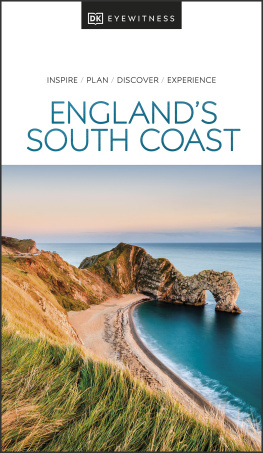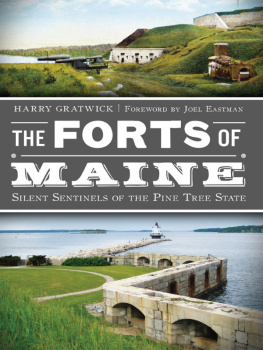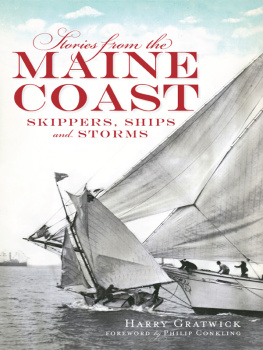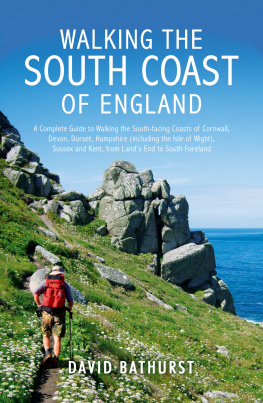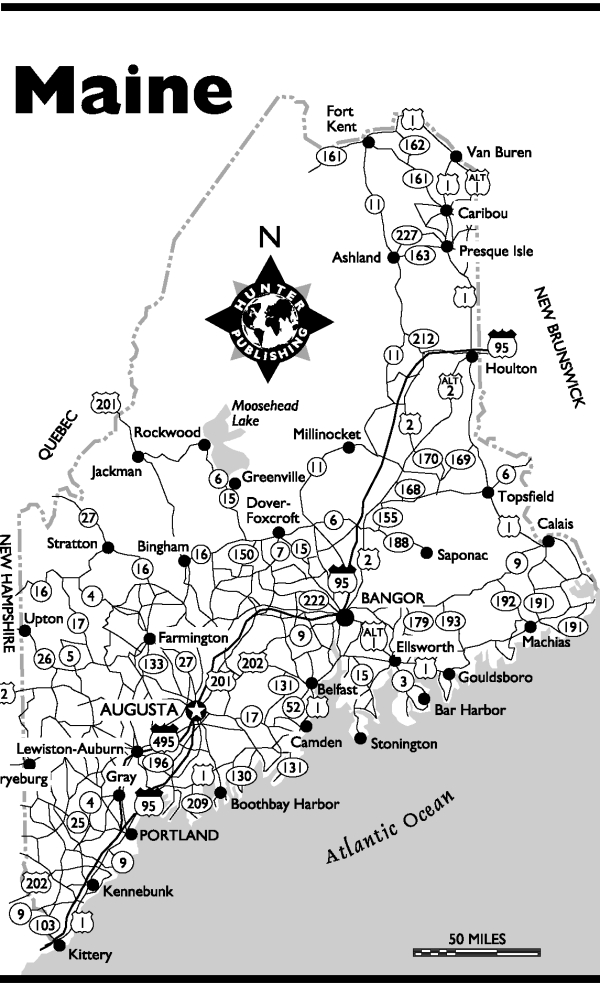Maine's South Coast: Portland, Scarborough, Kennebunk, Sebago Lake & Beyond
Earl Brechlin
HUNTER PUBLISHING, INC
Earl Brechlin
All rights reserved. No part of this publication may be reproduced, stored in a retrieval system, or transmitted in any form, or by any means, electronic, mechanical, photocopying, recording, or otherwise, without the written permission of the publisher.
This guide focuses on recreational activities. As all such activities contain elements of risk, the publisher, author, affiliated individuals and companies disclaim any responsibility for any injury, harm, or illness that may occur to anyone through, or by use of, the information in this book. Every effort was made to insure the accuracy of information in this book, but the publisher and author do not assume, and hereby disclaim, any liability for any loss or damage caused by errors, omissions, misleading information or potential travel problems caused by this guide, even if such errors or omissions result from negligence, accident or any other cause.
www.hunterpublishing.com
About the Author
A registered Maine Guide who designed and built his own energyefficient home, Earl D. Brechlin lives in Bar Harbor on Mount Desert Island. He is an avid hiker, backpacker and whitewater paddler and author of several guidebooks to Acadia National Park.
During winter he enjoys snowshoeing and cross-country skiing in Acadia and snowmobiling near his vacation home in Greenville on Moosehead Lake.
Brechlin has been the editor of the Bar Harbor Times, a weekly newspaper, for 15 years. He is a past president of the Maine Press Association, a former Journalist of the Year in Maine, and is on the executive board of the New England Press Association.
Dedication
To those who have come before. To those who will follow. Live the adventure.
Introduction: Discovering Maine
Adventure is worthwhile in itself. Amelia Earhart
The farthest east of any state, and the largest and wildest of any in New England, Maine is often perceived as the literal end of the line.
In many ways it is.
But that is not the entire story.
Granted, there is only one major interstate highway in and out. Regular passenger rail service is only now coming to fruition. Only two airports Bangor and Portland have regular service by commercial jets, although scheduled flights by commuter air serve most larger towns.
West Quoddy Head with its distinctive red-and-white-striped lighthouse near Lubec is the easternmost point in the United States. The Appalachian Trail, a 2,158-mile footpath that begins on Springer Mountain in Georgia, ends atop mile-high Katahdin in Baxter State Park. More than a thousand hikers begin down south each year. Fewer than 200 will finish the entire journey. Yet even as one path ends, another begins. A new, International Appalachian Trail, which heads north to Mount Jacques Cartier in Quebec, begins at the base of Katahdin.
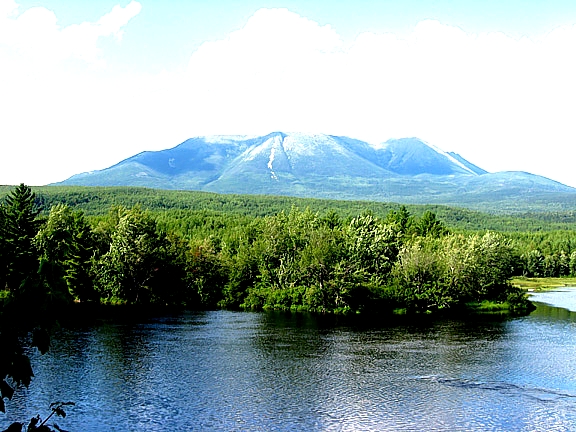
Mount Katahdin
Maine is the only state in the lower 48 that borders only one other state. Except for a long frontier with New Hampshire the only way in or out is through another country Canada or by sea.
Just over one million year-round residents are spread out over more than 20 million acres of land. With most major population centers located in the southern part of the state, the farther north you go the faster the population density drops. Its not long before moose and loons begin to outnumber humans.
Popular trends, fads and crazes seem to hit Maine last if at all.
Distance both physically and culturally has created a land rich in closely held tradition. Yet a steady stream of visitors, connections to the world at large, and an almost institutional rejection of insular attitudes has resulted in a society remarkably open to embracing new ideas, methods and fashions providing they bring with them sufficient utilitarian purpose or practical application to stand the test of time.
For it is time that is the sole witness and arbiter of change in this ancient landscape. Here the vagaries of climate and the arc of seasons can be discerned not just on the land but also in the faces and hands of those whose lives and livelihoods are tied to it each day.
In Maine the story is not one of the land, or the sea, or the people but rather of the land,andthe sea,andits people. The story of one cannot be told without the telling of the tales of the others.
While Maine has long been settled, it is not by any means an old state.
Its origins date back to the1600s, although it did not officially join the Union until 1820 when it formally severed ties with Massachusetts. While forts are many, notable armed skirmishes here were few. Still, the first naval battle of the revolutionary war was fought off the Down East coast near Machias.
Maines makeup today is a study in contrasts. Cosmopolitan cities, such as Portland, Lewiston and Bangor, jostle for attention with the trendy tourist towns of Kennebunkport, Camden and Bar Harbor. Like a mother wood duck, venerable L.L. Bean in Freeport sits surrounded by a brood of factory outlets and mini-malls competing not for cracked corn but rather the plastic nourishment lining the wallets of visitors.
Meanwhile fourth-generation, family-owned general stores from Rangeley to Greenville stock everything from live bait to the Boston papers (each in season, of course).
Most of all, Maine is a seemingly timeless rural place. The names of families in the oldest cemeteries can still be found in the phone books today. Tiny villages on back roads continue on as always with little more than late model pickup trucks in the driveways and the occasional satellite dish in the dooryard to betray the fact they are not the exact same community you could have experienced six generations ago.
Still, even those who live in what urbanites might consider wilderness cherish the wildness of the country deeper in. Many families own backwoods and lakeside camps or cabins to which they can retreat.
In the Great North Woods, the ghost of naturalist Henry David Thoreau still speaks in whispers above the white froth of wild rivers sporting rapids with names like Hulling Machine and The Cribworks. Today he would smile, undoubtedly, at the thought that a state which boasts millions of acres of undeveloped private timberlands open to public recreation would still insist on preserving 205,000 acres in Baxter State Park; most of which by law must remain free of the artificial cacophony of internal combustion engines, radios or cellular phones.
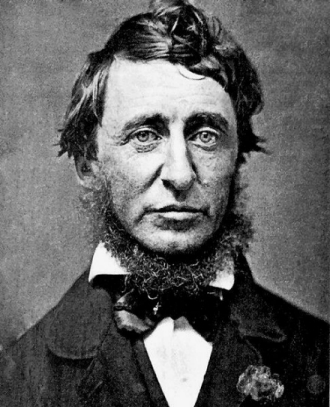
Henry David Thoreau
From north to south, east to west, tall white pines compete with granite spires to frame the cosmic flame and crackle of the northern lights. Mountains, rivers, forests, and shores harbor quiet glens, undiscovered waterfalls and a lifetime of explorations.
Mist rises at dawn from jewel-like ponds with names known but to a few. It may have been days or even weeks since a dry fly, paddle or anything more than the cry of a loon has broken the mirror-flat surface. Barren mountain tops, where snow lingers long into June, wrap themselves each day in the embrace of wind and cloud. Moose wander through backwaters in search of succulent water plants. As night descends, the call of the Eastern coyote echoes from nearby ridges.


